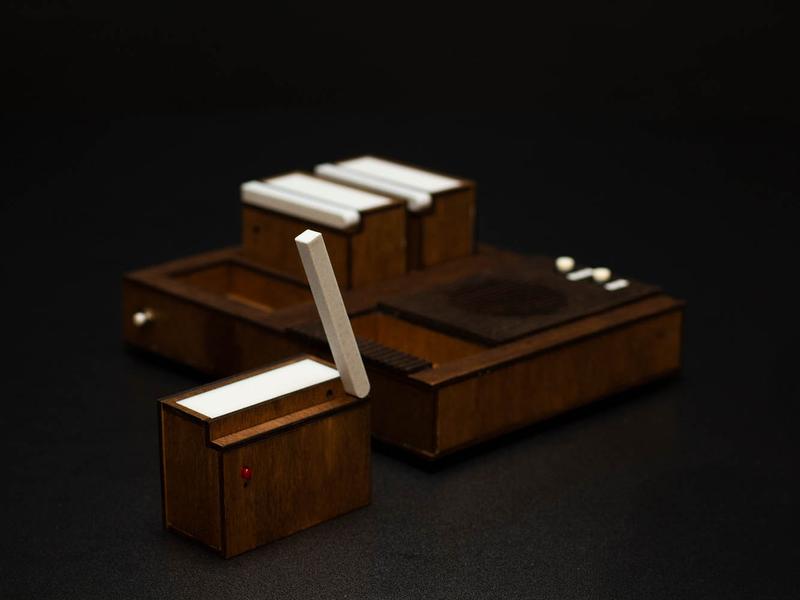Limited Memory
Concept / Design / Prototype / Development
June 2020
The goal of Limited Memory is to challenge our reliance on digital storage to help retrieve the past, encourage people to process their memories, and explore the idea of memory degradation over time.
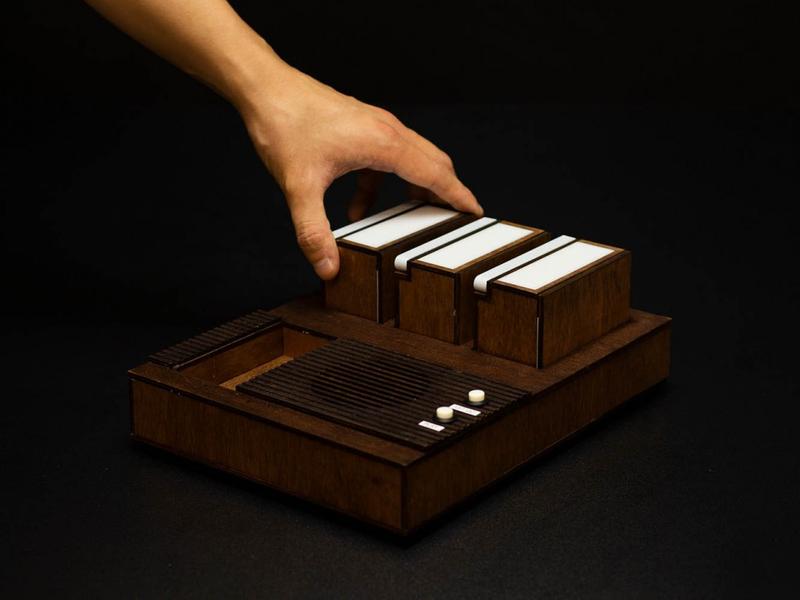
Concept Video
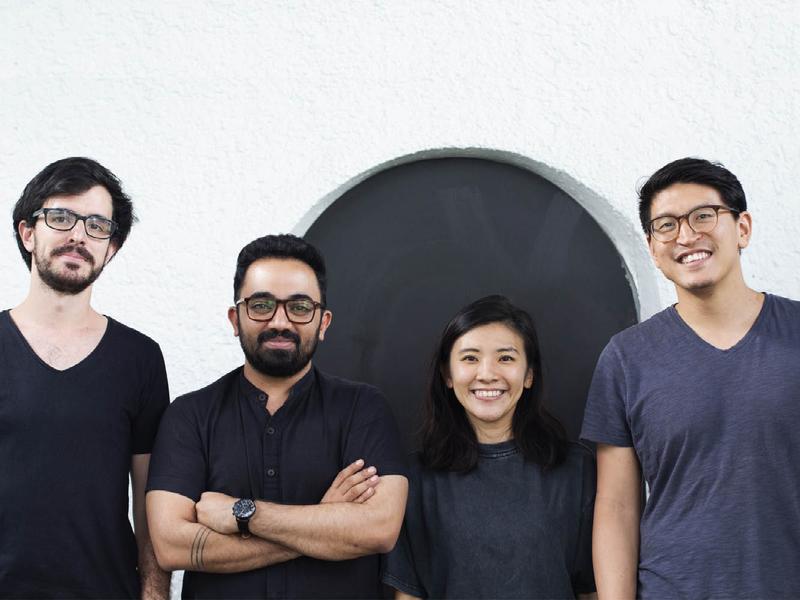
Limited Memory is an audio recording device which requires users to be more intentional about the memories they keep and the ones they let go of. The device stores up to three audio recordings of three minutes that degrade over time unless the user chooses to ‘sustain’ the memory by playing the recording or let go replacing it with a new recording.
The goal of Limited Memory is to challenge our reliance on digital storage to help retrieve the past, encourage people to process their memories, and explore the idea of memory degradation over time.
This was the result of 1-week group project with Aakash Dewan, Julian Jimsa, and Diana Pang for the physical computing course during the CIID Interaction Design Programme in 2020. The design brief was to “reinvent an ordinary object by reimagining its existing interactivity that considers a beyond-the-user scale.” While we loosely followed a design process that involved research, brainstorming, prototyping, and iteration, we also allowed the process to take a more artistic path for this project.
Inspiration
When we think of augmented reality, a futuristic image often appears of smart glasses, wrist-based devices, and wild hand gestures. However, technological augmentation of reality has already been quietly evolving in our pockets over the last decade. Data like phone numbers, birthdays, and todo lists that used to be stored in our minds are now relegate to SDDs in our smartphones. By transferring responsibility of this data to an external device, we free up brainpower to use on more important things.
As we explored further down this path, we began to wonder what are the consequences of exporting data that is more personal, like memories, to our smartphones?
Today, we essentially have a limitless amount of storage for our photos and videos. We anxiously snap photos of every potentially special moment and refuse to delete even the most seemingly insignificant photo. The past is instantly retrievable but it begs the question: is this version of the past still meaningful? Is this refusal to let go of memories healthy? What consequences will this have when scaled up to a society?
What if you only had 9MB to store your life?
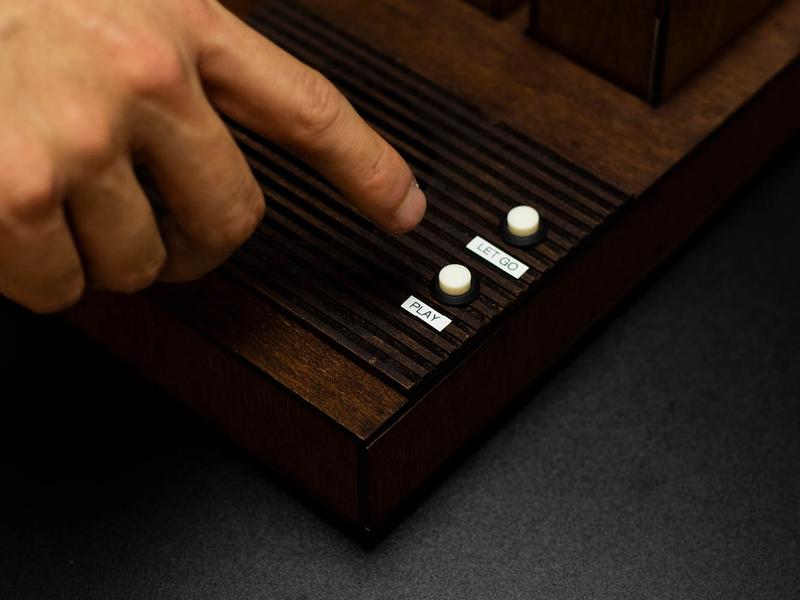
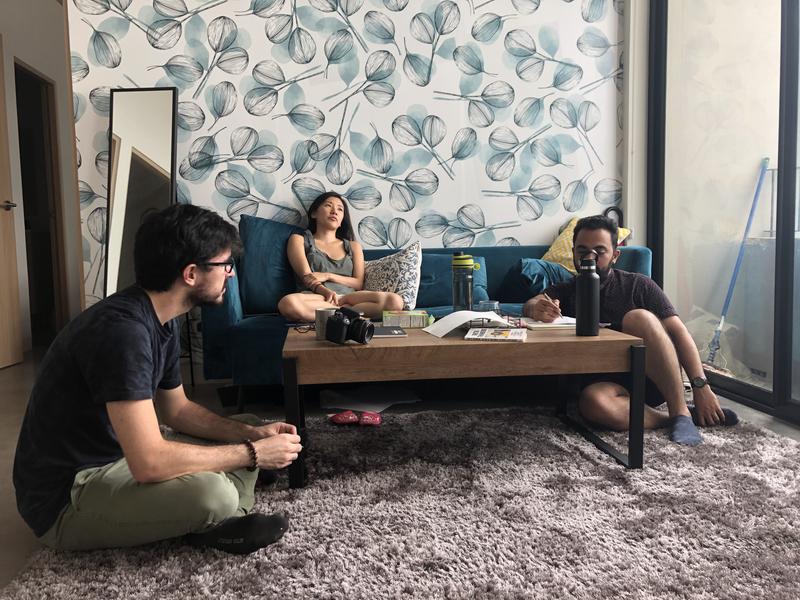
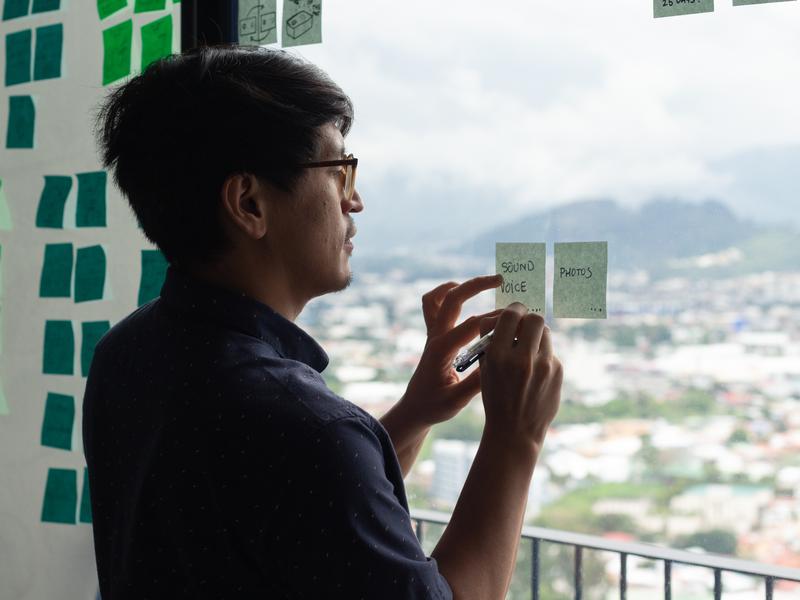
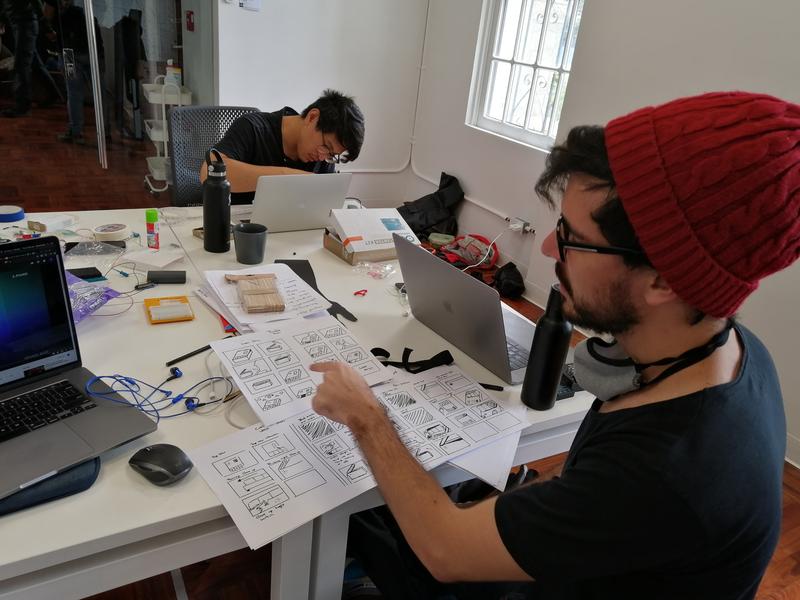
During the process of working on this project, we explored many different themes as a group.
Scarcity, physicality, and preciousness
This theme initially emerged through discussions as our changing relationship with music. We talked about the preciousness of owning records - because they were tangible, because you only had access to a small amount of songs, and because records would deteriorate over time, this made society’s relationship with music inherently more meaningful. While streaming services today offer an unlimited library and convenience, our relationship with music has become more shallow as a result. Might our relationship with our own memories share a parallel narrative?
Rituals, passage of time, processing emotions
Another topic of discussion was the importance of rituals in our lives. Rituals often play a role in the demarcation of time but, perhaps more importantly, they help us process time and big ideas. Graduations, weddings, baby showers, housewarmings – rituals such as these help us mark the passage from one phase of life to another. They give us an opportunity reflect on a previous identity and to embrace a new one.
Memory degradation, reinforcement, fictions of the past
The last crucial theme explored during this topic is the malleability of memory. Unlike the videos, photos, and audio recordings stored in our phone, the memories in our minds are not static. If we do not revisit the memories every so often, the connections in our brain that make up that memory weaken. On the other hand, every time we revisit a memory, specific moments can be exaggerated or changed. Our memory is not the same as the past, it is, as they say, a fictional story inspired by true events.
Concept
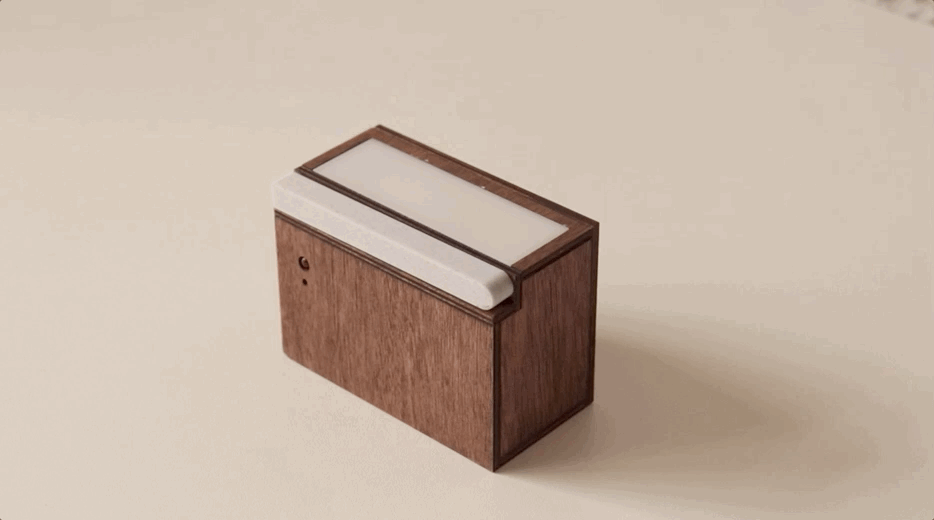
The antenna acts as the interface to start and stop recordings.
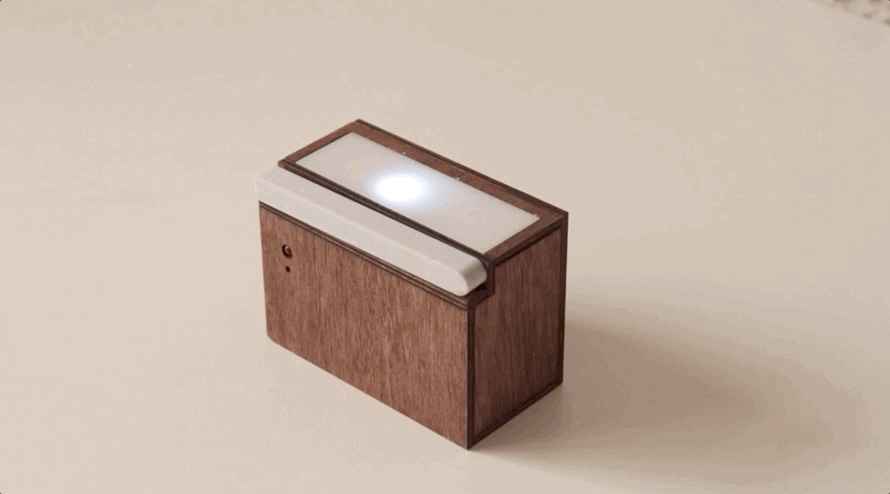
Memories slowly fade as they are ignored.
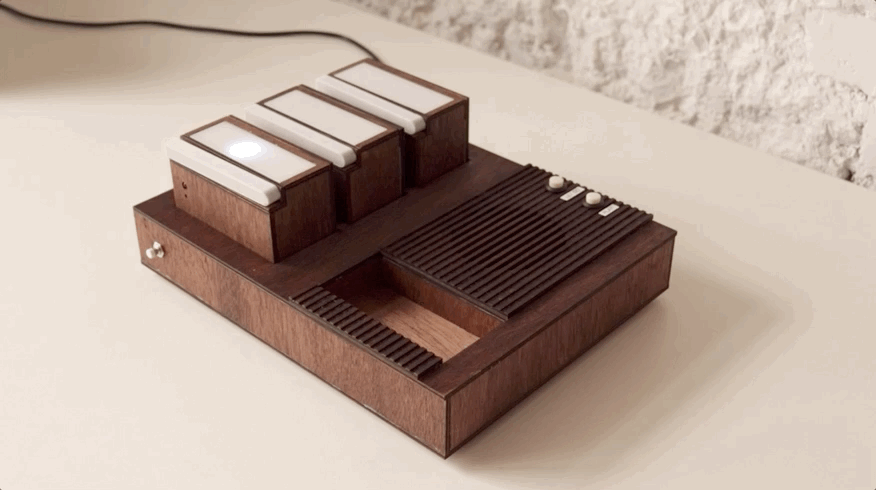
Playing a memory brings it back to life.
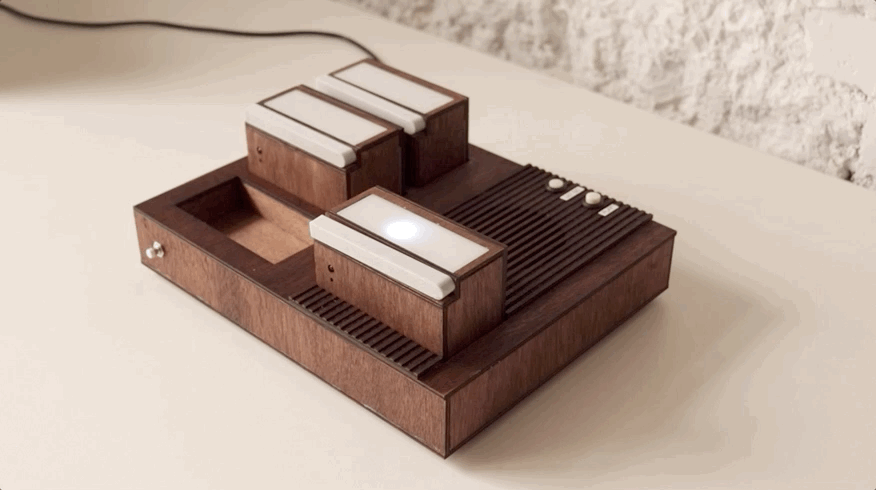
Leting go of existings memory make room for new ones.
Limited Memory is a provokatype that pushes us to think about our relationship both with technology and our own memories. Instead of unlimited storage, what if we only had 9MB to store our memories? Which memories would you keep and what would you let go of? Would it change how you ritualize and process your memories?
We wanted a form that invoked a theme of nostalgia and memories and is inspired by old-time radios and cassette players. There are two main components to Limited Memory: the memory cassettes and the memory player.
Memory Cassettes
Memory cassettes allow you to record memories on the go but only up to 3 minutes each. You can raise the antenna to record audio and lower it to stop recording. A red light indicates the record state and a glow through the acrylic panel indicates the presence of a memory.
Much like tape cassettes, the memories in the cassette will degrade over time. However unlike tapes, memory will degrade if left alone and and only regenerate when you listen to them.
Memory Player
The memory player can hold up to three memory cassettes. It has a dedicated play spot that allows you to play or let go of a specific memory. By playing a memory cassette, it revives the memory inside it to full clarity. By letting go of a memory, you can free up space for a new memory. However, you are forced to listen to the memory one last time as both the audio and light fade away.
Process
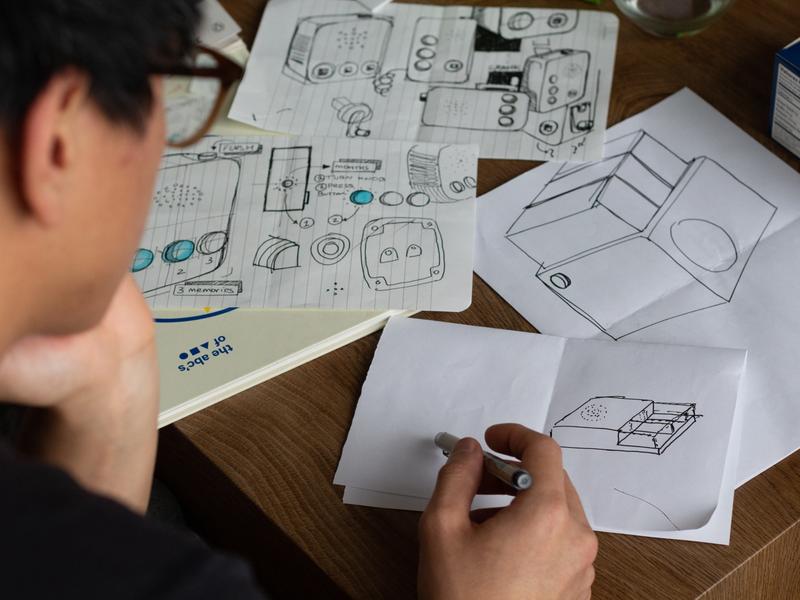
Working on early explorations and sketches of the form.
We started off by agreeing on a general direction for the project and doing extensive desk research around the subject of technology, memory, and rituals. From there, we shared what we found as inspiration for continued discussion and brainstorming.
After a few rounds of visual brainstorming, we landed on the general direction of a device to store and let go of memories. In its original conception, the idea was much more complex and convoluted. It involved being able to store one memory per day, seven memories a week, four a month, twelve a year, and ten per decade. The memories could be stored as photos, videos, or audio.
After a few rounds of visual brainstorming, we dramatically simplified the idea to three memories of three minutes of audio each. We liked how much the constraint clarified the power of the idea.
From there, we aligned on the core interactions of the device and relied on bodystorming to decide what each interaction could look like. From there, the form of the device started to emerge. We explored a few different directions before landing on something similar to what we ended up with.
We had two initial prototypes - one for form and another for function. We split up into pairs to work on each separately. Julian and I worked on the Arduino circuitry while Aakash and Diana worked on getting the form right. We started off by aligning on what our state machine would look like. Then we built the circuit and coded the programming feature by feature until every interaction was flushed out.
Inevitably, we ran into many problems along the way, including trying to debug third-party MP3 shields with paid PDFs of decade-old Australian DIY magazines. Risky experiments like this were time-boxed and when they didn’t work out, we fell back to doing audio processing on a connected laptop with p5.js.
When both of the form and function prototypes were flushed out, we created our third and final prototype to merge the two together. The final prototype was composed of a base station and three recording boxes. The base station prototype was built with wood panels, an Arduino Uno, speaker, and two buttons. The recording box prototype was built with wood and acrylic panels, a 3D-printed antenna, an Arduino Nano 33 IoT, NeoPixel LED strip, a photoresistor, and recording LED. A laptop running p5 recorded the sounds and facilitated communication between separate devices through bluetooth and serial connections.
This project was highlighted by Arduino’s official website and instagram account.
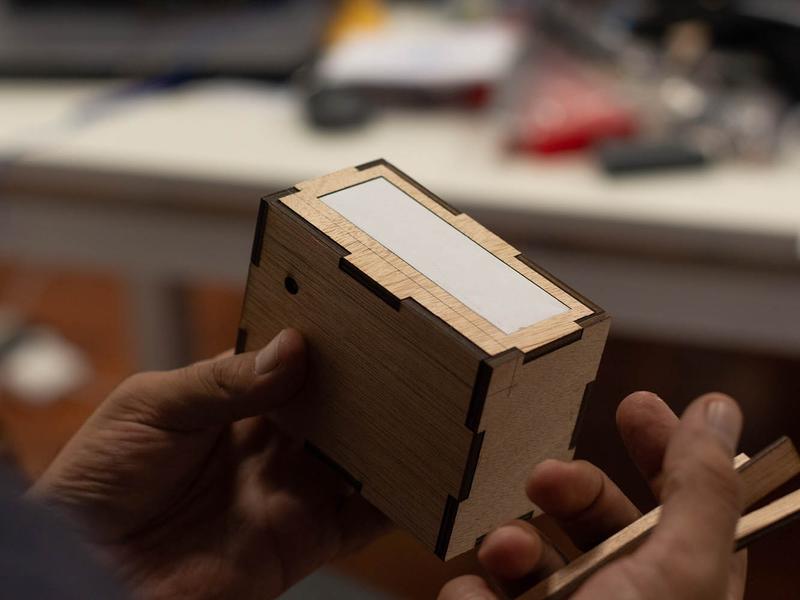
Working on the final version of the physical prototype.
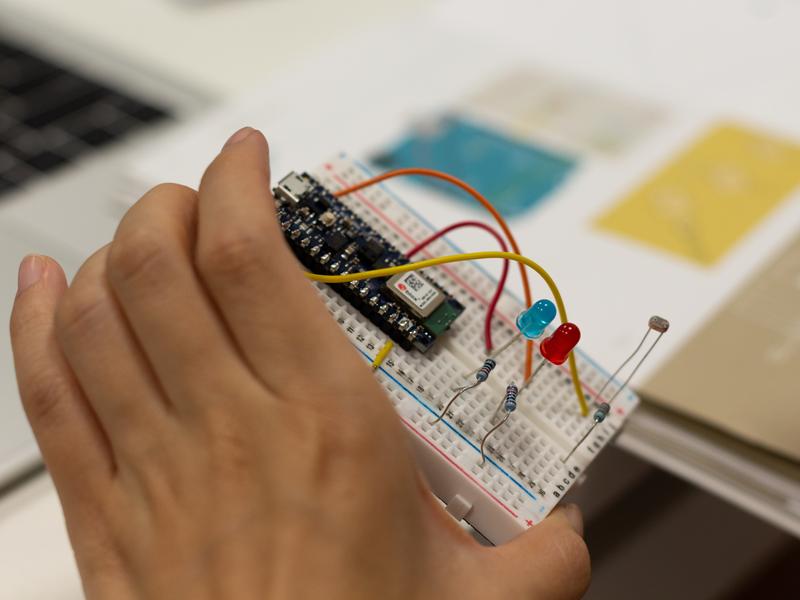
An early prototype of the memory box circuit.
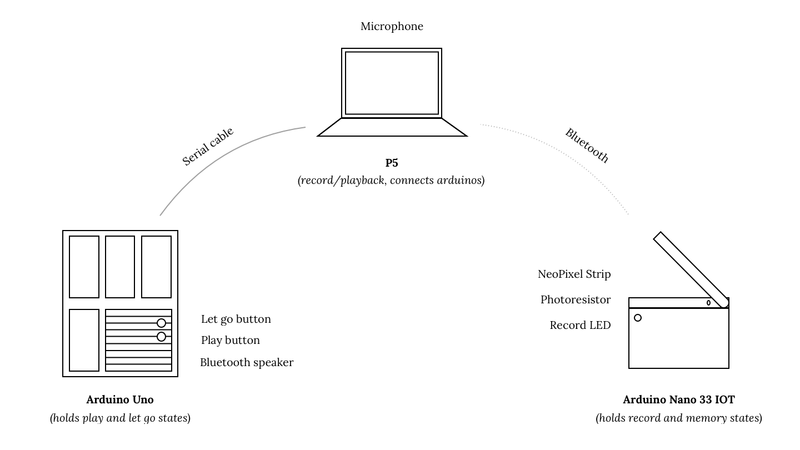
Due to the short timeframe of this project, a laptop running p5.js was used to "Wizard of Oz" the communication and recordings between the two devices.
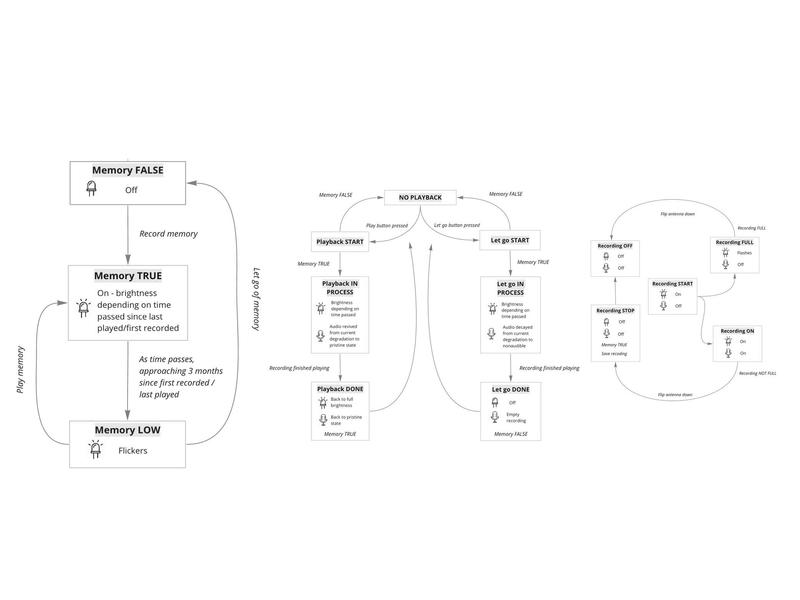
Diagramming the state machine for our device.
